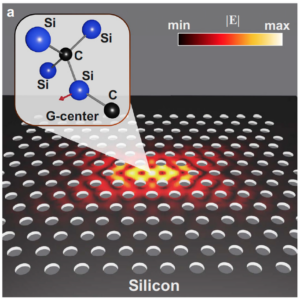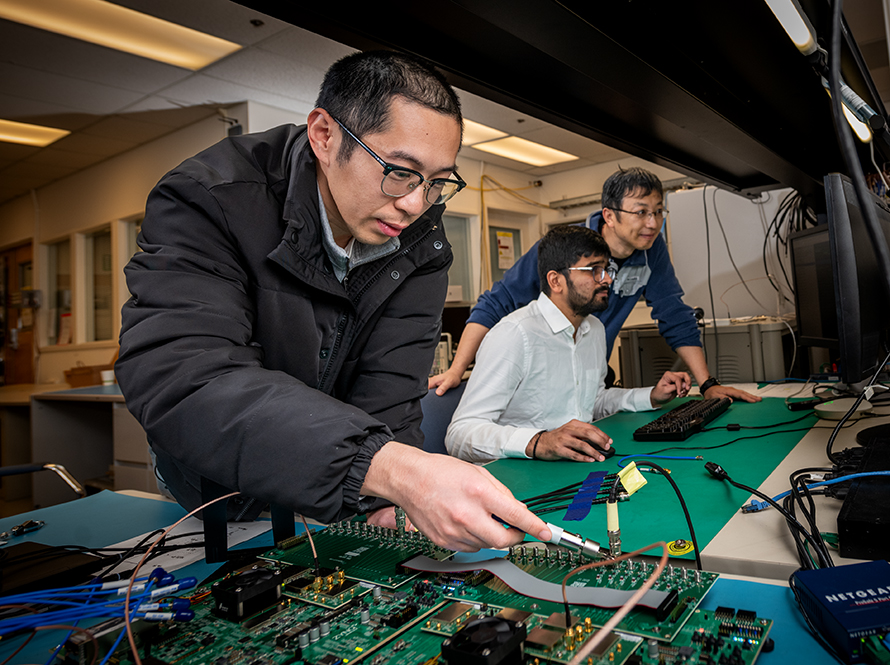Quantum Information Science, or QIS, is an emerging field that promises to revolutionize security, computing, and communications. QIS draws upon expertise and techniques in the physical sciences, mathematics, computer science, and engineering, with applications spanning quantum sensing, networking, and computing to a quantum internet. These applications could lead to new functions, such as quantum cryptography and quantum cloud computing, that promise unparalleled security and unimaginably high speeds, enabling new research possibilities and scientific breakthroughs.
Realizing the potential of QIS, however, will require the precise control of highly coherent quantum bits (or qubits)—the fundamental building blocks of quantum technologies.
In pursuit of this objective, researchers in the Accelerator Technology & Applied Physics (ATAP) Division at Berkeley Lab are investigating novel methods that utilize the spin of atoms and particles, as well as the polarization of light, to create and manipulate qubits for driving the quantum technologies essential to QIS applications. They also develop advanced tools to investigate and implement complex quantum algorithms and applications.
For instance, ATAP’s Fusion Science & Ion Beam Technology (FS&IBT) Program is exploring novel qubit candidates and qubit synthesis approaches enabled by the division’s cutting-edge beam and plasma technologies, which include new developments in conventional ion implantation to femtosecond-laser and laser-driven ion pulses for synthesizing qubits and quantum materials. This work is connected to the Department of Energy Office of Science’s Quantum Application Network Testbed for Novel Entanglement Technology, which brings together world-leading experts to construct a testbed for quantum networking technologies.
FS&IBT is exploring potential qubit candidates like “color centers” in materials such as diamond and silicon. Color centers are tiny defects in crystal structures that form when the crystals are exposed to high-energy particles. These defects emit light and offer direct optical access, making it possible to integrate many qubits with high precision and long spin coherence times. This makes them well-suited for quantum applications involving single photon sources and quantum networking, which would be essential for creating a quantum internet.

BELLA’s petawatt laser is used to create color centers in silicon. (Credit: Berkeley Lab)
To create these color centers, FS&IBT researchers, in partnership with colleagues from the Lab’s Molecular Foundry and the Department of Electrical Engineering and Computer Sciences at the University of California, Berkeley, used the petawatt laser in ATAP’s BELLA Center to generate a dense plasma of low-energy atoms from a microns-thick foil target. These atoms diffuse into silicon and, after being pre-heated by high-energy ions from the same laser-ion pulse, form color centers.
The team is exploring other dopants, such as boron or transition metals, to see how the properties of color centers can be tailored for specific QIS applications.
FS&IBT also advances the refinement, integration, and control of increasingly complex qubit assemblies, enabling novel applications in quantum sensing and quantum networking. In collaboration with colleagues from Princeton University and the California Institute of Technology, FS&IBT researchers are investigating how the quantum sensing of the spin of helium-3 atoms evaporated from the surface of a liquid helium film could be used to detect dark matter particles.
The work, part of a multi-divisional project led by the Lab’s Physics Division, promises a new technique that could extend the search for dark matter into mass ranges below the detection threshold of current detectors and lead to more powerful sensors for applications in particle physics, astrophysics, and cosmology.
Inspired by particle accelerator controls, researchers in the Berkeley Accelerator Controls and Instrumentation (BACI) Program at ATAP have developed an open-source qubit control system called QubiC. Based on field-programmable gate arrays (FPGAs), a commercial off-the-shelf technology familiar to classical control systems, QubiC is designed to control and measure superconducting quantum processing units.

BACI researchers led the QubiC design, leveraging expertise and robust technologies based on particle-accelerator controls and instrumentation. (Credit: Thor Swift/Berkeley Lab)
The latest iteration, QubiC 2.0, introduces an extensible open-source framework supporting mid-circuit measurements and feed-forward capabilities. Mid-circuit measurement allows for measurements of specific qubits at predetermined times during the execution of a quantum circuit. Feed-forward enables conditional operations based on the results of prior quantum measurements.
These features are crucial for quantum algorithms and computations, facilitating state projection, branching, measurement-based quantum computing, and error correction. As the only open-source quantum control system with mid-circuit measurement capabilities, QubiC 2.0 offers researchers advanced tools to explore and develop sophisticated quantum algorithms and applications.
By applying accelerator expertise to QIS and exploring innovative techniques for mass-producing qubits and qubit control and readout systems, ATAP researchers are helping to develop the technologies that could herald a quantum revolution.
To learn more …
Lasers, Ions, and Silicon: Expanding the Toolkit and Building Blocks for Quantum Information Science
Bringing the Quantum Internet One Step Closer
Quantum Sensing: Shedding New Light on Dark Matter
Quantum Information Science and Qubit Synthesis
Quantum Sensing Workshop Held at Berkeley Lab
Controlling and Measuring Qubits
For more information on ATAP News articles, contact caw@lbl.gov.
